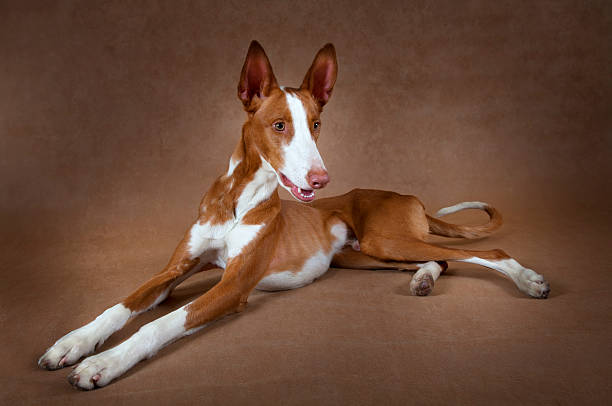Basenji dogs, often referred to as “barkless dogs” or “African barkless dogs,” are a truly unique and fascinating breed. Their history, traits, and temperament set them apart from many other dog breeds. In this article, we will delve into what Basenji dogs are like, from their distinctive appearance to their spirited personalities, making them a beloved choice among dog enthusiasts.
Physical Characteristics
Basenji dogs possess a distinct and elegant appearance that captures attention:
Sleek and Compact Build: Basenjis are of medium size, with a well-muscled, athletic body. They are agile and built for speed, ideal for their history as hunters.
Short Coat: Their short, fine coat comes in various colors, including red, black, tricolor, and brindle. The coat requires minimal grooming, making them relatively low-maintenance in the grooming department.
Erect Ears and Curled Tail: One of the most recognizable features of Basenji dogs is their pointed, erect ears and tightly curled tail, adding to their unique charm.
Temperament and Behavior
Basenji dogs are known for their spirited personalities and distinctive behaviors:
Independence: Basenjis are independent thinkers and can be somewhat aloof. They often approach life on their terms, making them intriguing companions.
Curiosity: These dogs have a boundless curiosity and are known for their love of exploration. They enjoy sniffing out new scents and investigating their surroundings.
Playfulness: Despite their independent nature, Basenjis are playful and love engaging in activities and games. They often bond closely with their families.
Quiet but Vocal: While often described as “barkless” due to their lack of traditional barking, Basenjis are not completely silent. They communicate with unique vocalizations, including yodel-like sounds known as “baroos.”
Loyal and Protective: Basenjis are loyal to their families and can be protective when needed. They form strong bonds with their owners.
Exercise and Training
Basenji dogs have specific needs when it comes to exercise and training:
High Energy: Basenjis have plenty of energy and require regular exercise to stay happy and healthy. Daily walks, playtime, and mental stimulation are essential.
Positive Reinforcement: Training should involve positive reinforcement methods, as Basenjis respond well to rewards and treats for good behavior.
Early Socialization: Proper early socialization is crucial to ensure they get along well with other dogs and pets.
Conclusion
Basenji dogs are a captivating breed that appeals to those who appreciate their unique qualities. Their elegant appearance, independent spirit, and distinctive vocalizations make them stand out in the canine world. While they may present challenges in training due to their independent nature, the love and loyalty they offer in return are immeasurable.
FAQs about Basenji dogs:
Q1: Where do Basenji dogs originate from?
A1: Basenji dogs originate from Central Africa, particularly the Congo region. They are one of the oldest known dog breeds, with a history dating back thousands of years.
Q2: Why are Basenjis often called “barkless dogs”?
A2: Basenjis are often called “barkless dogs” because they don’t bark in the traditional sense. Instead, they produce unique vocalizations, including yodel-like sounds called “baroos.” This feature makes them distinct among dog breeds.
Q3: What is the typical size of a Basenji dog?
A3: Basenjis are a small to medium-sized breed. Adult Basenjis typically weigh between 20 to 25 pounds (9 to 11 kg) and stand about 16 to 17 inches (41 to 43 cm) tall at the shoulder.
Q4: Are Basenji dogs good with children and other pets?
A4: Basenjis can be good with children and other pets when properly socialized from a young age. However, they may have a strong prey drive and should be supervised around smaller animals.
Q5: Are Basenjis easy to train?
A5: Basenjis are intelligent but can be independent and stubborn. Training requires patience and consistency, and positive reinforcement methods are generally most effective.
Q6: Do Basenjis shed a lot?
A6: Basenjis have short coats and are considered a low-shedding breed. Their grooming needs are relatively minimal, but regular brushing can help maintain their coat.
Q7: What is the exercise requirement for Basenji dogs?
A7: Basenjis are an active breed and require daily exercise to stay happy. They enjoy activities like jogging, agility, and interactive play.
Q8: Are Basenji dogs good for apartment living?
A8: Basenjis can adapt to apartment living if they receive sufficient exercise and mental stimulation. However, they should have access to outdoor play areas.
Q9: What is the lifespan of a Basenji dog?
A9: The average lifespan of a Basenji is around 10 to 12 years, although some may live longer with proper care.
Q10: Do Basenjis have specific health concerns?
A10: Basenjis can be prone to certain health issues, including hip dysplasia, eye conditions, and Fanconi syndrome (a kidney disorder). Regular veterinary check-ups are essential for their well-being.
Q11: Are Basenjis known for being escape artists?
A11: Yes, Basenjis are known for their agility and curiosity, which can make them skilled at finding ways to escape from enclosures. Secure fencing and supervision are essential to prevent escapes.
Q12: Are Basenjis suitable for first-time dog owners?
A12: Basenjis can be a challenging breed for first-time dog owners due to their independent nature and specific training needs. They are often best suited to experienced dog owners who understand their unique characteristics.


